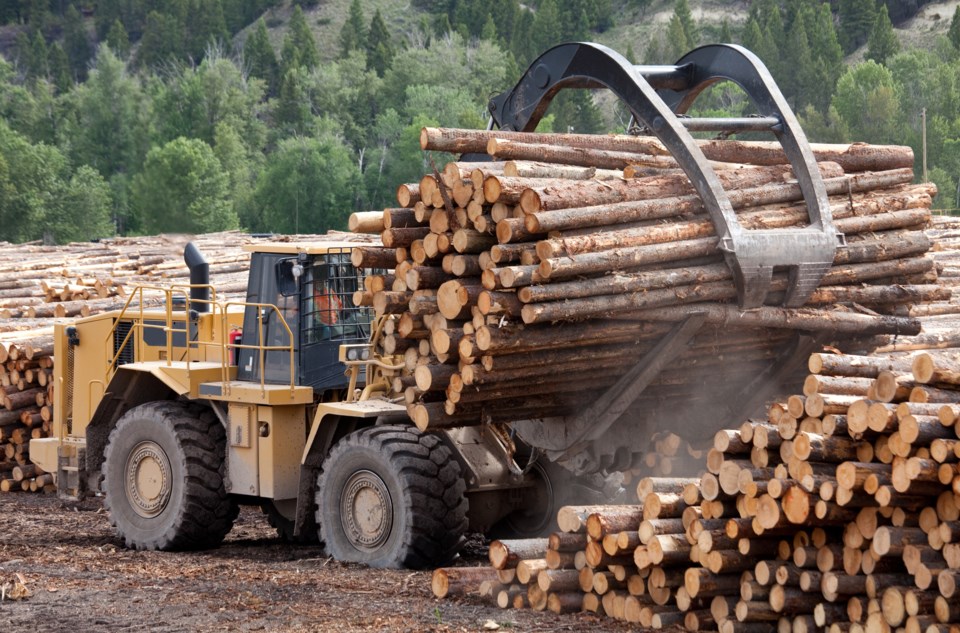The provincial government recently published data on the value of exports in 2023. After surging in 2021-22 following the partial shut-down of economic activity during the COVID-19 pandemic, B.C.’s exports fell markedly in dollar terms last year. In 2023, the value of merchandise exports came in at $56.2 billion, compared to $65 billion in 2022, when the province’s export receipts were boosted by soaring energy prices together with generally buoyant non-energy commodity markets.
Examining the composition of B.C.’s international exports yields important information regarding the industry sectors where we enjoy a degree of comparative advantage within the North American and wider global market contexts. Averaged over the two-year period from 2022 to 2023, roughly 22 per cent of B.C.’s merchandise exports consisted of forest products (notably lumber and pulp). This is down significantly from forestry’s 35-per-cent export share back in 2016.
Energy has firmly supplanted forestry as B.C.’s No. 1 source of export earnings. Last year, energy generated 35 per cent of merchandise export earnings, up from less than 20 per cent in 2015-16.
Digging into the trade statistics reveals that coal is B.C.’s top export, responsible for a little more than 18 per cent of all export earnings in 2022-23 and making up approximately half of the broader energy export category. Natural gas provided nine per cent of export receipts in 2023, down from 12 per cent the year before. Oil, electricity and “other” types of energy round out the energy export basket. The inclusion of coal as an energy export is somewhat arbitrary. The international harmonized data system used to tabulate trade based on product classifications captures coal as part of the broader mineral fuels category that also includes bitumen, oil, natural gas, propane and others. In reports presenting export data, the “mineral fuels” category is often given the less technical label of “energy products.” Trade data is also tabulated on an industry basis, and in this case coal exports are included as part of the mining industry. Metallurgical coal is used to make steel rather than to generate electricity, so in this sense it is akin to other mined metal products that are inputs into steel production.
The other major categories of B.C.’s exports are machinery and equipment (12.5 per cent of export earnings in 2023), metallic minerals (11.6 per cent) and agriculture and seafood products (9.9 per cent).
As a small economy that must pay its way in an unforgiving and competitive world, B.C. needs to produce and sell exports to customers in other markets. Among other benefits, exports furnish the financial means to pay for the vast array of imports that support the prosperity and well-being of B.C. households, and that allow our businesses to operate efficiently and grow.
A hard truth about B.C.’s trade is the outsized role natural resource-based products play in the export mix. Added together, energy, non-metallic minerals and related products, metal ores, forest products and agri-food represent over two-thirds of B.C.’s international exports of goods. This is higher than the comparable share for Canada and for most other advanced economy jurisdictions.
And energy is about to become an even bigger factor in B.C.’s export mix, when liquefied natural gas (LNG) production and shipments begin next year. Added together, the giant LNG Canada facility in Kitimat, Woodfibre’s LNG plant near Squamish and the planned Cedar LNG project will be adding another $6 billion to $8 billion in export earnings for the province before the end of the decade. We estimate that by 2030, energy will be supplying at least 45 per cent of the province’s annual merchandise exports, cementing the sector’s foundational role in B.C.’s economy.
Looking beyond B.C., it is hard to overstate the importance of energy to the broader Canadian economy. In its latest “scorecard” report, the Coalition for a Better Future notes that “over the past decade, Canada recorded a cumulative trade gap of $130 billion. If not for energy, our trade gap would have been about $1 trillion.” By any measure, the energy sector punches well above its weight when it comes to paying the bills—in Canada and, increasingly, in British Columbia, too.
Jock Finlayson is chief economist of the Independent Contractors and Businesses Association. Ken Peacock is the Business Council of British Columbia’s senior vice-president and chief economist.




